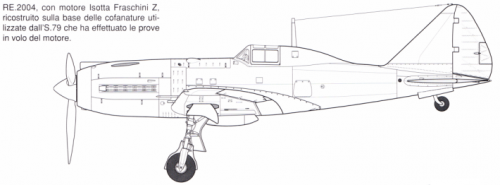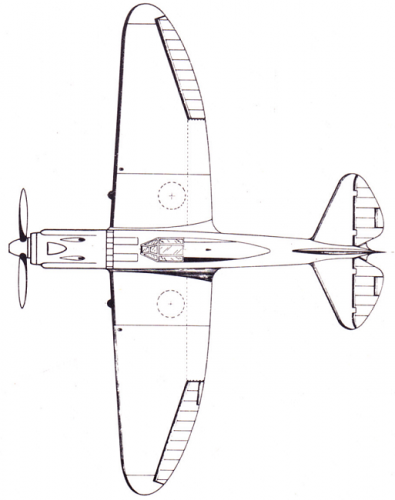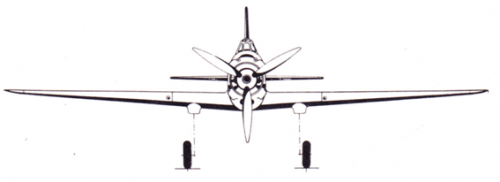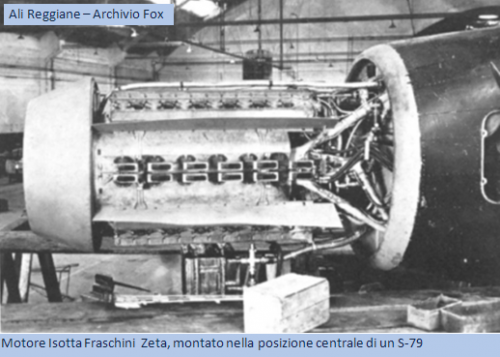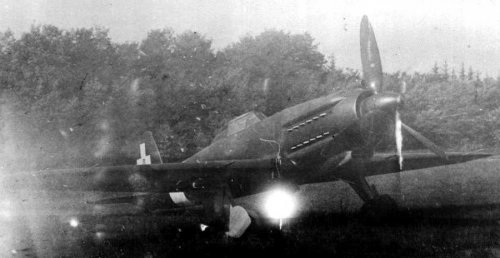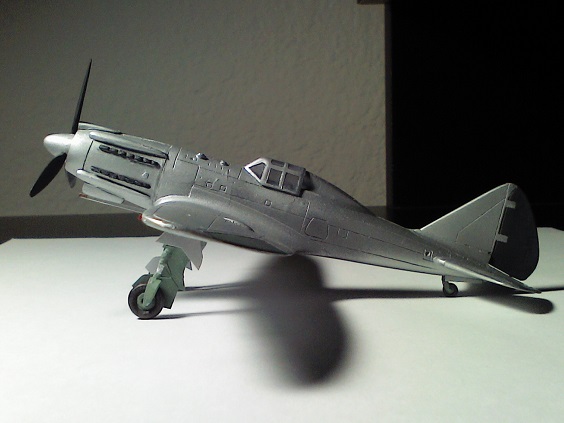archipeppe
ACCESS: Top Secret
- Joined
- 18 October 2007
- Messages
- 2,431
- Reaction score
- 3,152
Despite its number Reggiane Re 2004 was developed after the Re 2005 "Sagittario", effectively the Re 2004 could be easily regarded as a Re 2005's variant with a different engine, instead of the actual DB-605 the new aircraft should be propelled by an Italian engine the Isotta Fraschini Zeta R.C. 24/60 with 24 cylinders at X shape, air cooled with a power of 1250 CV.
The Ministero dell'Aeronautica (Ministry of Air War) immediately issued an order to produce a couple of prototypes of such aircraft, and the Isotta Fraschini provided a mock-up of its engine in order to realize the nacelle to fit with the new nose for the Re 2004.
This mock-up was actually used in the central nacelle of a Savoia Marchetti SM-79 in order to realize the nacelle.
The Ministero ordered two Re 2004 prototypes and 4 pre-production aircrafts:
- sn. 90377 and 90390 for two RE 2004 prototypes;
- sn. 90454 for four RE 2004 of pre-series;
To Eng. Longhi never liked this new machine, instead he always preferred the Re 2005 correctly regarding it as a real winner.
Due to production problems, due to the particular cooling system, Isotta Fraschini was never able to provide its engines to Reggiane, and the Armistice arrived (8 September 1943) with any Re 2004 in flight condition.
It is not clear if some parts of the Re 2004 was ever manufactured, or it was incorporated in the actual production of the Re 2005.
Source: http://www.alireggiane.com/aerei-f2/re-2004-t327.htm
The Ministero dell'Aeronautica (Ministry of Air War) immediately issued an order to produce a couple of prototypes of such aircraft, and the Isotta Fraschini provided a mock-up of its engine in order to realize the nacelle to fit with the new nose for the Re 2004.
This mock-up was actually used in the central nacelle of a Savoia Marchetti SM-79 in order to realize the nacelle.
The Ministero ordered two Re 2004 prototypes and 4 pre-production aircrafts:
- sn. 90377 and 90390 for two RE 2004 prototypes;
- sn. 90454 for four RE 2004 of pre-series;
To Eng. Longhi never liked this new machine, instead he always preferred the Re 2005 correctly regarding it as a real winner.
Due to production problems, due to the particular cooling system, Isotta Fraschini was never able to provide its engines to Reggiane, and the Armistice arrived (8 September 1943) with any Re 2004 in flight condition.
It is not clear if some parts of the Re 2004 was ever manufactured, or it was incorporated in the actual production of the Re 2005.
Source: http://www.alireggiane.com/aerei-f2/re-2004-t327.htm

